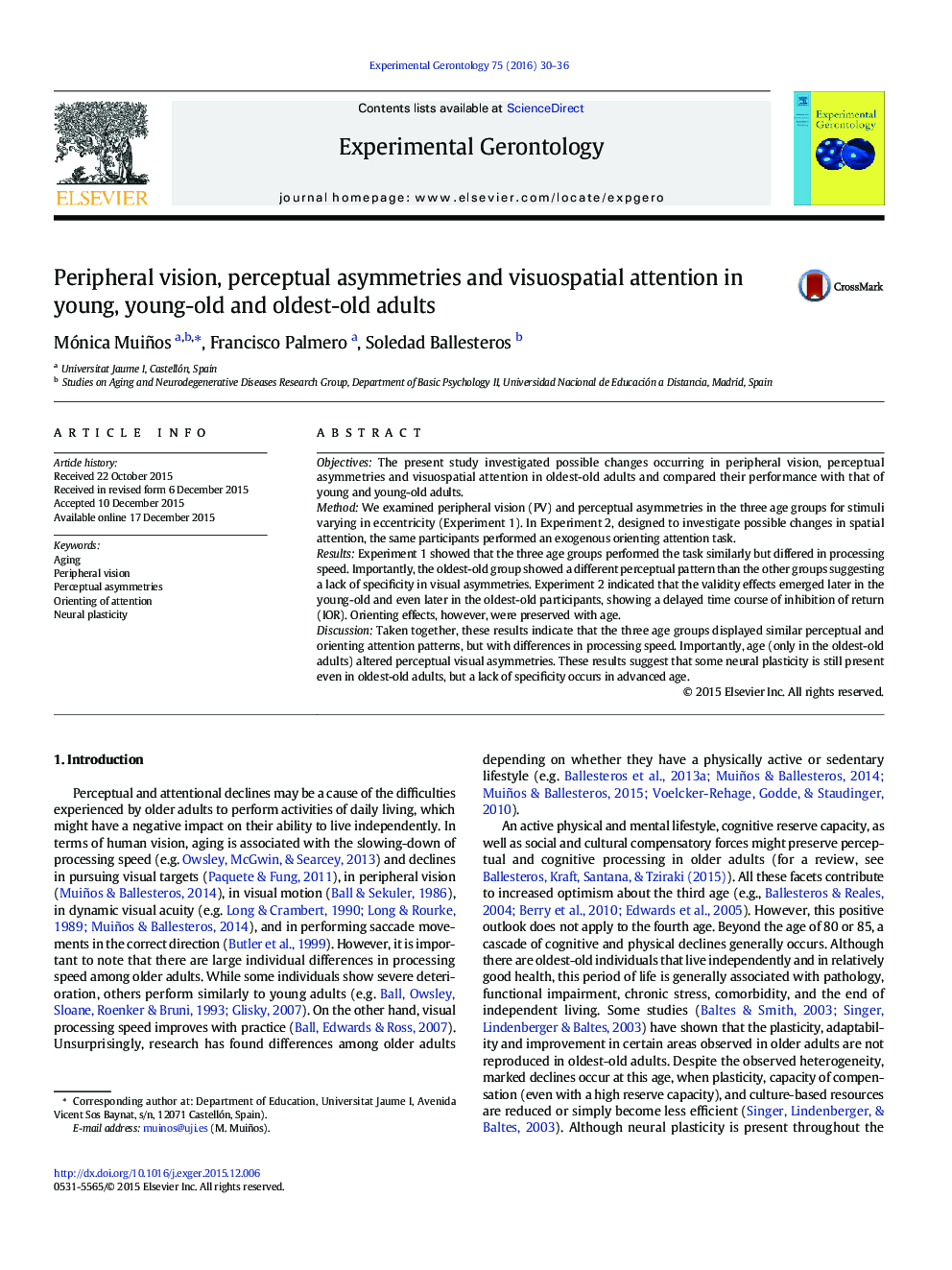| Article ID | Journal | Published Year | Pages | File Type |
|---|---|---|---|---|
| 1906138 | Experimental Gerontology | 2016 | 7 Pages |
•Age-related declines were related to processing speed.•The oldest-old group presented a weaker visual asymmetry than the other groups.•Reflexive orienting in response to peripheral cues is preserved even at a very old age.
ObjectivesThe present study investigated possible changes occurring in peripheral vision, perceptual asymmetries and visuospatial attention in oldest-old adults and compared their performance with that of young and young-old adults.MethodWe examined peripheral vision (PV) and perceptual asymmetries in the three age groups for stimuli varying in eccentricity (Experiment 1). In Experiment 2, designed to investigate possible changes in spatial attention, the same participants performed an exogenous orienting attention task.ResultsExperiment 1 showed that the three age groups performed the task similarly but differed in processing speed. Importantly, the oldest-old group showed a different perceptual pattern than the other groups suggesting a lack of specificity in visual asymmetries. Experiment 2 indicated that the validity effects emerged later in the young-old and even later in the oldest-old participants, showing a delayed time course of inhibition of return (IOR). Orienting effects, however, were preserved with age.DiscussionTaken together, these results indicate that the three age groups displayed similar perceptual and orienting attention patterns, but with differences in processing speed. Importantly, age (only in the oldest-old adults) altered perceptual visual asymmetries. These results suggest that some neural plasticity is still present even in oldest-old adults, but a lack of specificity occurs in advanced age.
